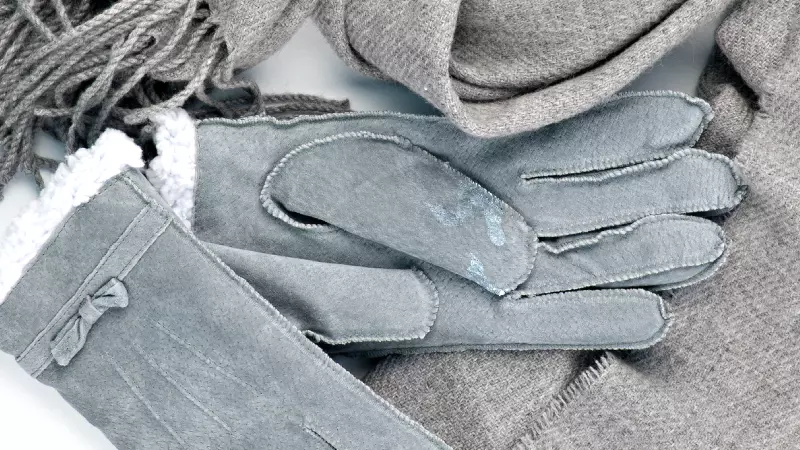How to Remove Super Glue from Leather: Tips & Tricks Revealed
Super glue is also known as cyanoacrylate adhesive, which is its technical name. Another commonly known name of super glue is crazy glue. Whilst the technical name sounds impressive, the 2 more commonly known names of this strong adhesive gives us a better idea of what it does functionally.
Super glue is commonly used to bond multiple materials, or multiple parts of the same material together. Its bonding strength is immense, and the time taken for the bonding to happen is relatively short.
Due to its purpose and function, super glue is also commonly made to be very resilient. That is to say, a simple application of water or a short exposure to a heat source does little to nothing to weaken the adhesive bond that super glue forms to other substances such as leather, much less its removal.
If you find yourself with super glue on a leather surface that you would like to remove, you might naturally think that you are stuck in a pickle. However no worries, this guide is meant to address some options that you have available. We will be walking through some options you have and based on your situation.
Out of the two main approaches, it’s best to pick the one that most aptly applies to you. The first method will be through a DIY approach using household items and the second method, a more convenient way by using a professional cleaner that is designed to remove super glue
Here’s how you can remove super glue from leather using household items:
- Scrape Off As Much Glue As Possible
- Apply Rubbing Alcohol On Stain
- Remove Softened Glue From Leather
- Wash Affected Area
- Condition Your Leather
Removing Super Glue From Leather Using Household Items
If you don’t have any professional leather cleaning product available at home and prefer to use common household items, then the following method may be your best bet. Before we get started, you will need to ensure that you have a certain list of materials readily available and handy. These are as follows:
- Plastic Knife
- Cotton Swab or Cotton Ball
- Rubbing Alcohol
- Gentle Soap Solution
- Microfiber Cloth
- Towel
- Leather Conditioner
1. Scrape As Much Super Glue Off Leather As Possible
Using a plastic knife (or anything similar), remove as much of the super glue as you can at this stage. You also want to ensure that you’re not damaging the leather surface as much as possible during this step. We therefore recommend using the non jagged edge of the knife for this purpose or anything else that does the job.
Carefully scrape the top of the super glue stain using at least moderate pressure and strength. Once we thin the layer of glue that is sitting on your leather, we can proceed to the next step.
Take special care to not scrape your leather as much as possible. You also do not want to end up tearing or cutting around the leather that is exposed to the glue. While you would have removed the glue in that case, you would also have damaged the structural integrity of your leather, leading to the potential of greater damage in the long run.
2. Apply Rubbing Alcohol On Super Glue
Next, pour a little bit of rubbing alcohol, also known as isopropyl alcohol, on one side of a cotton ball, taking care to not soak the entire piece. Any type of 70% – 75% isopropyl alcohol works best on leather.
If you are using a cotton swab, dip it into your rubbing alcohol solution. Now, before you proceed, you may want to test the impact exposure that the rubbing alcohol might have on an inconspicuous area of your leather.
You’d want to ensure that the leather does not react in an undesirable manner such as discoloration, therefore try to avoid isopropyl alcohol that is too concentrated. Once you are confident to proceed, gently rub your cotton ball or cotton swab on the super glue stain.
This will help soften and break down the remaining layer from the previous step. You also want to take care to not spread the solution across the surface area of your leather as much as possible.
Important Note: Although some guides may recommend it, we highly suggest that you do not use acetone for this. Acetone has negative effects on leather and can damage its fiber structure, leaving it discolored and brittle.
3. Remove Softened Super Glue Using Towel
Once your rubbing alcohol solution sets in and softens the super glue, you want to take the next step of the actual removal. Use your towel and very carefully, dab the softened stain.
The most important thing to note here is that under any circumstances, you will want to avoid wiping the stain. This will simply spread the super glue across a wider surface area of your leather which will exacerbate the original problem you are facing.
If you have removed some super glue but are realizing that there are still remnants that cannot be removed via dabbing, this likely means that the glue remnants are not softened enough. Repeat the previous step and come back to this to remove the remnant glue stains.
4. Wash Affected Surface Area With Gentle Soap Solution
Once you are satisfied that you have removed the glue stain, dip your microfibre cloth in your gentle soap solution and lightly clean the area you have just treated.
Rubbing alcohol (especially at higher concentration levels) can be harsh and while it was helpful to help remove your glue stain, it would not be helpful to have your leather exposed to it in any sort of elongated way.
If you are looking to take the chance to clean your leather item holistically, we recommend that you undertake the cleaning in two separate cycles. Clean the local area first and use a separate microfibre cloth for the second cleaning cycle to minimize remnant spread of unwanted chemicals.
5. Apply Leather Conditioner
Lastly, you want to protect the treated leather as much as possible. The steps you have taken to remove the super glue are non-trivial and can potentially damage your leather in the long run. A leather conditioner will help to ensure that your leather’s surface remains as supple as possible and minimize chances of cracking and peeling in the long run.
A good leather conditioner is also vital in applying a protective coat that makes removing all other types of stains, such as future super glue or ink stains much easier. Remember to only use conditioners that are designed for leather.
Removing Super Glue From Leather Using products & leather cleaning services
While we are big advocates for DIY approaches as much as possible, there are certain circumstances whereby you are better off using a dedicated leather cleaner that is designed to remove super glue stains or consuming a professional leather cleaning service.
1. Super glue Remover
One product that we highly recommend is the Damn Good Super Glue Remover. Not only does the name give away it’s ability to remove super glue, but it works extremely well on leather and doesn’t damage it.
Simply apply the non-damaging solvent onto the super glue stain of your leather, like you would using rubbing alcohol (using a cotton pad or the applicator) and you can easily scrape the super glue off!
2. Professional Leather cleaning Services
Unfortunately, due to the nature of super glue, the measures you will have to take in its removal are non-trivial. Compared to many other use cases that we have covered on this site, this particular situation has a much higher relative chance of inflicting damage upon your leather article.
If you have a very tiny blob of super glue that has unfortunately ended up on your leather item, you are in a better position to try and address the situation yourself. However, in the situation that the super glue exposure is significant against your item’s surface area and visually obvious, you might want to consider the professional cleaner route.
Before deciding which professional cleaner you might want to enlist, we would recommend calling them ahead of time to ensure that they have good experience in super glue removal.
You can also reference online reviews that a professional cleaner has. Not only will you get a sense of their general quality of work, you might be able to find reviews specific to super glue removal. Again, this is recommended due to the specialized nature of super glue removal from leather.
things to Consider When Removing Super Glue from Leather
We also wanted to add a section where we share some important things to consider when trying to remove super glue from leather.
Type of Leather
Super glue also reacts differently depending on the type of leather. For example, removing super glue from nubuck or suede is much more complex, due to its brushed texture, which also happens to more easily absorb super glue.
When trying to get rid of super glue from nubuck or suede, you want to be extra careful and also skip the leather conditioning process in the last step. Here, you should consider a super glue remover or a professional cleaning service.
Leather Item You Are Treating
The leather item that you are attempting to rid off super glue will be a very important consideration point. Outside of portability, there are certain items that you would certainly be more predisposed to invest in the services of a professional cleaner.
If you have accidentally exposed your designer leather bag or leather watch (strap) to super glue, we would almost unequivocally recommend going the professional cleaner route. Not only are you giving yourself the best chance of protecting your expensive purchase, these aforementioned items are easy to transport from your home to the cleaner’s shop.
However, a full-sized couch might not be as convenient to bring to a retail shop. If you are dealing with highly immovable objects, you might be forced into going the way of self treatment.
Similarly, if you are treating an inexpensive or non cosmetic item, we are more inclined to recommend undertaking the task by yourself. Two examples of leather goods that can fall under this category include leather work gloves and leather work boots.

About Matthew
Co-Founder, Editor-in-Chief & Writer At Leatherskill
I’m a leather enthusiast turned artisan. Apart from crafting leather products, I’m passionate about writing in-depth guides and reviews on all things leather!

